The Mystery and Melancholy of de Chirico
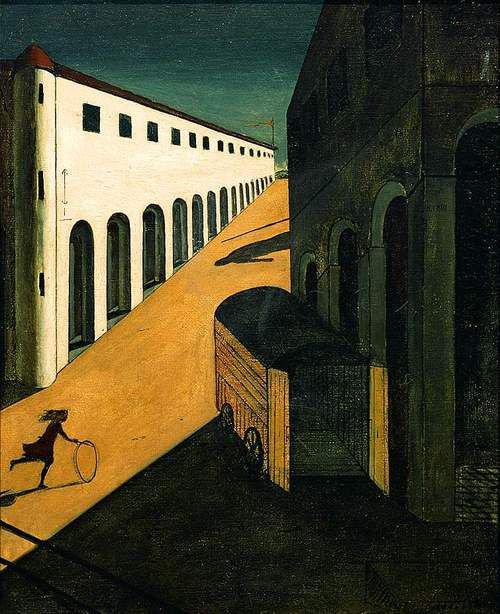 Mystery and Melancholy of a Street, 1913I am sorry to say that I never studied Metaphysical Art when I was at art school – I don’t even remember the term – but I must have been familiar with one of its founders even then, the artist Giorgio de Chirico (1888–1878), for his work has long been a favourite of mine.
Mystery and Melancholy of a Street, 1913I am sorry to say that I never studied Metaphysical Art when I was at art school – I don’t even remember the term – but I must have been familiar with one of its founders even then, the artist Giorgio de Chirico (1888–1878), for his work has long been a favourite of mine.
In Italian, Metaphysical Art translates as pittura metafisica, and de Chirico and fellow Italian painter Carlo Carrà (a leader of the Futurist movement as well) developed it in the second decade of the twentieth century. ‘Metaphysical art combined everyday reality with mythology, and evoked inexplicable moods of nostalgia, tense expectation, and estrangement.’ [Wikipedia]
 The Anguish of Departure, 1914
The Anguish of Departure, 1914
there is a disturbing and vaguely menacing mood in the dreamlike cityscapes.
When you look at de Chirico’s Metaphysical paintings (all produced over a decade, between 1909 and 1919), not only do they certainly evoke such moods, but you are not surprised to learn that they greatly influenced the Surrealists, for there is a disturbing and vaguely menacing mood in the dreamlike cityscapes. It is an effect achieved in part through the juxtaposition of tiny figures against monumental architecture.
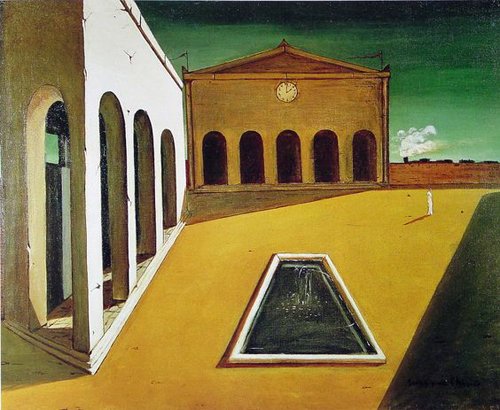 Delights of the Poet, 1913De Chirico was inspired by the writings of Nietzsche, ‘with its suggestions of unseen auguries beneath the appearance of things’, which translated into his own unexpected responses to quotidian surroundings and objects. He wrote in 1909 about the ‘host of strange, unknown and solitary things that can be translated into painting ... What is required above all is a pronounced sensitivity’— and both imagination and inclination I would think, to look beyond the surface of accustomed sights, such as the archways and piazzas of Turin where he spent a few days while on his way to Paris in 1911.
Delights of the Poet, 1913De Chirico was inspired by the writings of Nietzsche, ‘with its suggestions of unseen auguries beneath the appearance of things’, which translated into his own unexpected responses to quotidian surroundings and objects. He wrote in 1909 about the ‘host of strange, unknown and solitary things that can be translated into painting ... What is required above all is a pronounced sensitivity’— and both imagination and inclination I would think, to look beyond the surface of accustomed sights, such as the archways and piazzas of Turin where he spent a few days while on his way to Paris in 1911.
 The Agonizing Morning, 1912His deserted cityscapes of saturated colour – inspired by the ‘metaphysical aspect’ of Turin, especially its architecture – depict strange streets laid out with illogical perspectives, littered with strange objects, all in the high contrast lighting of the bright Mediterranean sun that produced such long shadows. While he focussed first on these, he gradually moved on to explore cluttered interiors that were sometimes occupied by surreal figures, faceless hybrids of statuary and wooden mannequins.
The Agonizing Morning, 1912His deserted cityscapes of saturated colour – inspired by the ‘metaphysical aspect’ of Turin, especially its architecture – depict strange streets laid out with illogical perspectives, littered with strange objects, all in the high contrast lighting of the bright Mediterranean sun that produced such long shadows. While he focussed first on these, he gradually moved on to explore cluttered interiors that were sometimes occupied by surreal figures, faceless hybrids of statuary and wooden mannequins.
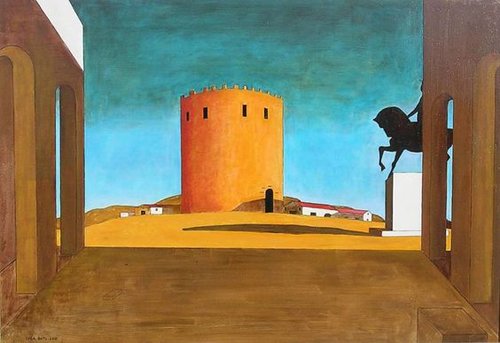 The Red Tower, 1913
The Red Tower, 1913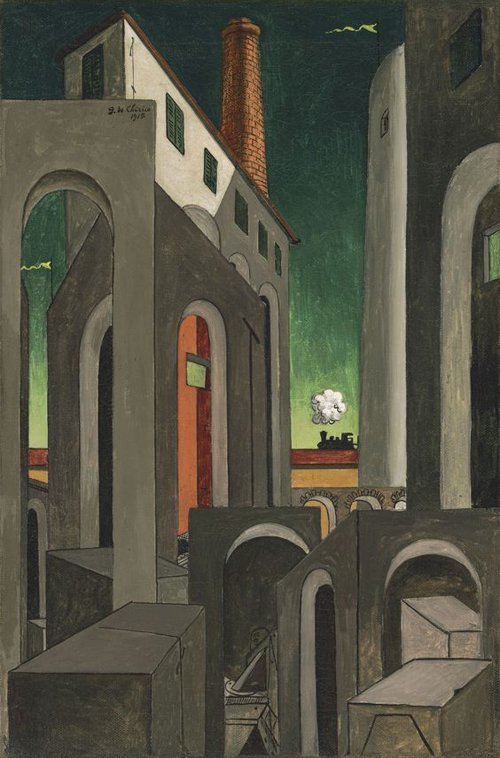 Fleeing Horse, 1917But it is the cityscapes that I love the most, for their disquieting sense of mystery and emptiness, a kind of visual poetry. I would like to run into those paintings, just like the girl with the hoop in Mystery and Melancholy of a Street, to explore those empty streets and discover what is hiding around the corner.
Fleeing Horse, 1917But it is the cityscapes that I love the most, for their disquieting sense of mystery and emptiness, a kind of visual poetry. I would like to run into those paintings, just like the girl with the hoop in Mystery and Melancholy of a Street, to explore those empty streets and discover what is hiding around the corner.
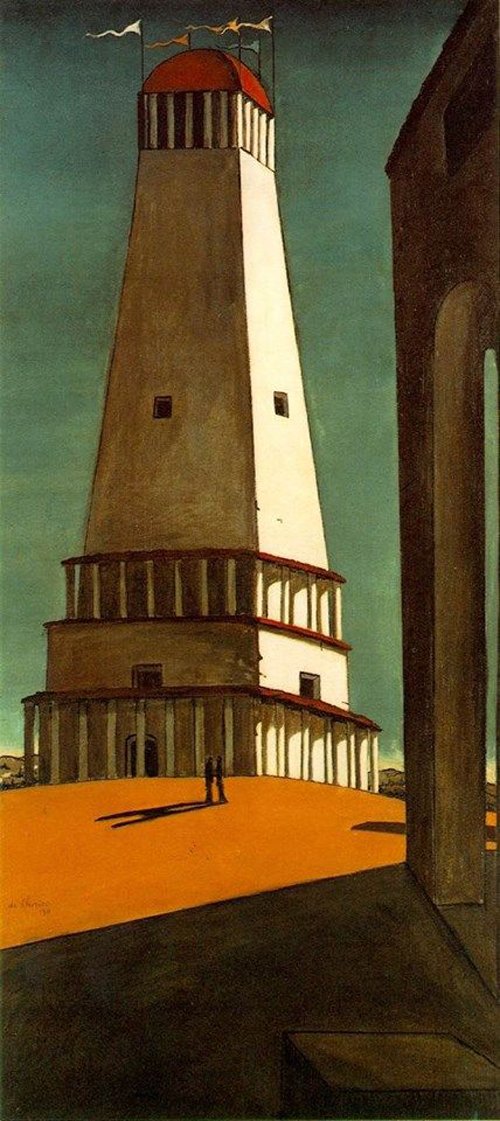 The Nostalgia of the Infinite, 1913
The Nostalgia of the Infinite, 1913
All images found on Pinterest

